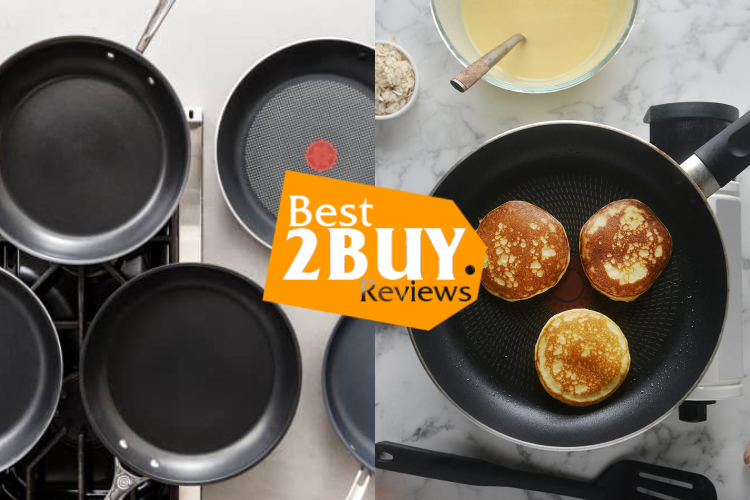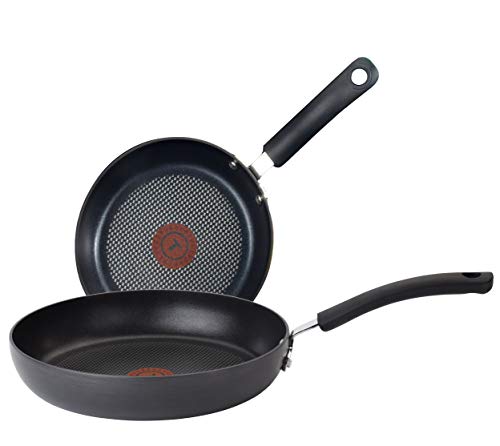Nonstick Frying Pan: A Comprehensive Guide

- 1. Nonstick Frying Pan: A Comprehensive Guide
- 2. How To Choose The Perpect Nonstick Frying Pan
- 2.1. Material Matters
- 2.2. Size and Shape
- 2.3. Thickness
- 2.4. Handle Design
- 2.5. Compatibility
- 2.6. Maintenance
- 2.7. Price and Warranty
- 3. Caring for Your Nonstick Frying Pan
- 4. Tips for Getting the Most Out of Your Nonstick Frying Pan
The nonstick frying pan emerges as a revolutionary innovation in the realm of culinary artistry. Whether you're a seasoned culinary connoisseur or a novice home cook embarking on your culinary journey, a top-tier nonstick frying pan serves as an indispensable ally in your kitchen. Within this comprehensive guide, we will explore every facet of nonstick frying pans, encompassing their historical roots, intricate design elements, and indispensable recommendations for proper care and efficient utilization.
A Brief History of Nonstick Cookware
The concept of nonstick cooking surfaces has ancient origins, but it wasn't until the mid-20th century that the familiar nonstick cookware we use today came into existence. In 1954, a fortunate accident occurred when a French engineer named Marc Grégoire stumbled upon the nonstick properties of a coating he had applied to fishing equipment. This serendipitous discovery marked the inception of Tefal, one of the pioneering companies to introduce nonstick cookware to the market.
The nonstick frying pan swiftly gained popularity due to its remarkable ability to cook with minimal oil, prevent food from sticking, and simplify the cleaning process. Since that time, nonstick frying pans have evolved into an essential kitchen utensil, widely embraced by cooks worldwide.
Construction of Nonstick Frying Pans
Nonstick frying pans come in a variety of materials, each offering its own unique set of advantages and disadvantages. The following are common materials used in the construction of nonstick frying pans:
- Aluminum: Lightweight and quick to heat up, aluminum pans excel in tasks requiring rapid temperature changes. They are often coated with a nonstick layer to prevent food from adhering to the surface.
- Hard-Anodized Aluminum: This special type of aluminum undergoes an electrochemical process that enhances its hardness and durability. Hard-anodized aluminum pans are resistant to scratches and can withstand higher cooking temperatures.
- Stainless Steel: Known for their durability and resistance to staining and rust, stainless steel pans are highly regarded. However, they are not naturally nonstick and may require an additional nonstick coating.
- Ceramic: Ceramic-coated pans feature a nonstick surface composed of a ceramic layer. They are popular among health-conscious cooks because they are PTFE and PFOA-free, offering a safe and non-toxic option.
- Cast Iron: Cast iron pans, although not naturally nonstick, can become virtually nonstick with proper seasoning. They are exceptional at retaining and evenly distributing heat, making them a favorite among many cooks.
Advantages Of Using A Nonstick Frying Pan
- Reduced Oil Usage: Nonstick frying pans reduce the need for excessive oil or butter, encouraging healthier cooking choices.
- Easy Cleaning: Thanks to their nonstick surface, cleaning up is a breeze as food effortlessly slides off.
- Versatility: Nonstick frying pans excel in handling a wide array of cooking tasks, including frying, searing, sautéing, and crafting perfect omelets.
- Uniform Heat Distribution: Many nonstick pans feature a thick base that guarantees consistent heat distribution, preventing the formation of hot spots that can result in uneven cooking.
- Ideal for Delicate Foods: Nonstick pans are especially well-suited for delicate ingredients like eggs, pancakes, and fish, which can easily break apart or adhere to other cooking surfaces.
How To Choose The Perpect Nonstick Frying Pan
Finding the perfect non-stick pan that aligns with both your requirements and your budget can be quite a challenging task. The vast array of options available, encompassing a spectrum of prices, brands, materials, durability, and functionality, can be overwhelming. However, there's no need to fret. The next time you embark on a shopping expedition for new cookware, here are some key factors to contemplate when selecting the ideal pan for your culinary needs.
Material Matters
The choice of material plays a pivotal role when it comes to non-stick frying pans. There are primarily two materials to consider:
- Teflon (PTFE): Teflon-coated pans represent the most prevalent non-stick option. They are relatively budget-friendly and offer exceptional non-stick properties. Nevertheless, they might not exhibit the same level of durability as alternative materials and could deteriorate over time.
- Ceramic: Ceramic non-stick pans have surged in popularity owing to their perceived health benefits, devoid of PTFE or PFOA, which can emit harmful fumes when overheated. Additionally, they tend to be more resilient, although they may necessitate more delicate care to preserve their non-stick attributes. Consider your cooking style and preferences when choosing between these materials.
Size and Shape
The dimensions and configuration of the frying pan you opt for should harmonize with your culinary requirements. If your culinary endeavors often entail preparing meals for a family or a sizable group, a larger pan (12 inches or more) would be the apt choice. Conversely, if your cooking is primarily oriented towards yourself or a smaller cohort, a 9 or 10-inch pan should prove adequate. Furthermore, factor in the shape; a flat-bottomed pan exhibits versatility and accommodates most cooking tasks, while a sloped-sided pan excels in flipping pancakes or crafting omelets.
Thickness
The thickness of the pan can significantly influence its capacity to distribute and retain heat. Thicker pans tend to disseminate heat more uniformly, mitigating the occurrence of hot spots that can lead to uneven cooking. Seek pans with a thickness measuring between 2.5mm to 3mm for optimal performance. Additionally, thicker pans typically exhibit greater resilience and are less susceptible to warping.
Handle Design
The handle of your non-stick frying pan is an oft-overlooked yet integral feature. Contemplate the following aspects:
- Material: Handles can be fashioned from an assortment of materials, including stainless steel, silicone, or even wood. Ensure the handle remains cool to the touch during cooking and is ergonomically designed for a comfortable grip.
- Riveted vs. Non-Riveted: Riveted handles tend to proffer enhanced stability and durability, although they can pose challenges during cleaning. Non-riveted handles possess a smoother surface but might not endure as long.
- Removable Handles: Certain pans come equipped with removable handles, which can be a convenient feature, particularly if you have limited kitchen storage space.
Compatibility
Verify whether the non-stick frying pan under consideration is compatible with your cooktop. Most pans cater to gas and electric stovetops, but not all are suitable for induction cooktops. If you own an induction stove, ascertain that the pan is explicitly designed for induction cooking.
Maintenance
Prudent upkeep and maintenance are pivotal in extending the lifespan of your non-stick frying pan. Seek pans that are dishwasher-safe for effortless cleanup, although it's worth noting that handwashing is gentler on the non-stick coating. Refrain from utilizing metal utensils, as they can inflict scratches and compromise the pan's non-stick attributes.
Price and Warranty
Non-stick frying pans encompass a wide price spectrum. Although the allure of the most economical option can be compelling, investing in a higher-quality pan can yield long-term dividends. Take your budget into account and search for pans that strike a harmonious balance between quality and cost. Furthermore, scrutinize the manufacturer's warranty to ensure adequate coverage in the event of defects or issues.
Caring for Your Nonstick Frying Pan
Taking proper care of your nonstick frying pan is essential for prolonging its lifespan and preserving its performance:
- Choose the Right Utensils: Steer clear of metal utensils that could potentially scratch the nonstick surface. Opt for utensils made of wood, silicone, or plastic.
- Moderate Heat Levels: Exposing your pan to excessive heat can harm the nonstick coating. Stick to low to medium heat settings for most of your cooking needs.
- Hand Washing: Even though some nonstick pans claim to be dishwasher-safe, it's advisable to wash them by hand using a gentle sponge or cloth. This practice helps prevent premature wear and tear.
- Skip Cooking Sprays: Avoid using cooking sprays, as they can accumulate on the nonstick surface over time, leading to a loss of effectiveness. Instead, use a small amount of oil or butter when required.
Tips for Getting the Most Out of Your Nonstick Frying Pan
- Preheat the Pan: Before adding your ingredients, make sure to preheat the pan. This step ensures even cooking and helps prevent sticking.
- Dry Your Ingredients: Before placing them in the pan, remember to pat dry any food you intend to cook. Excessive moisture can lead to sticking.
- Avoid High Heat for Extended Periods: While nonstick pans can handle moderate heat, refrain from using them for tasks that require extremely high temperatures, such as searing or broiling.
- Use Oil in Moderation: While nonstick pans require less oil, using a small amount can enhance the flavor and promote browning of your food.
- Keep an Eye on the Cooking: Continuously monitor your food while it cooks. When it's ready to be flipped or removed, do so promptly to prevent it from sticking to the pan.
The versatile and indispensable nonstick frying pan has become a cornerstone of contemporary kitchens. Its rich history, construction, and advantages render it the preferred option for numerous culinary tasks. By employing appropriate maintenance and culinary methods, a top-tier nonstick frying pan can remain a loyal companion for many years, greatly enhancing your cooking experiences and efficiency.











